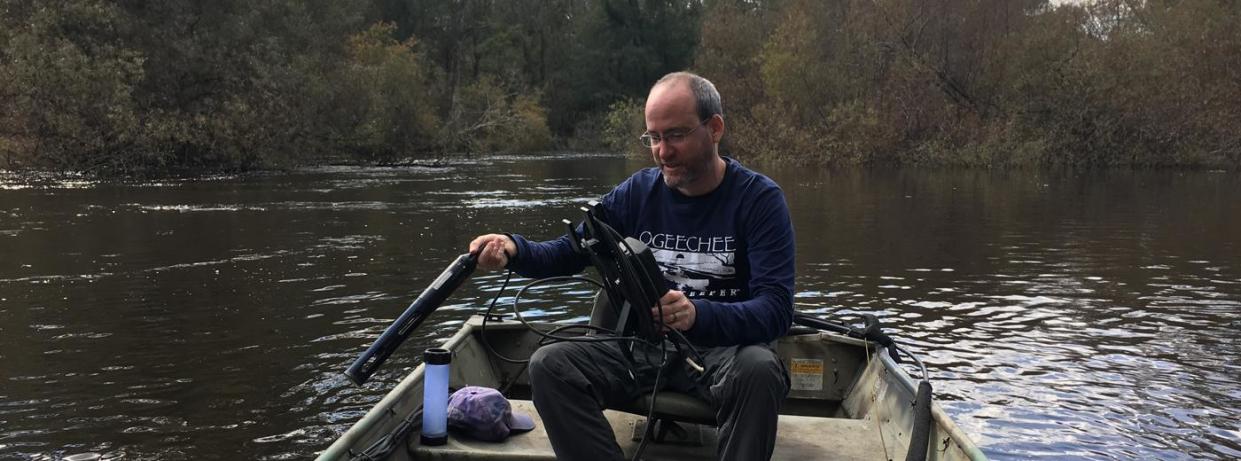EPA releases new, preliminary guidelines for 'forever chemical' contamination

From "BPA-free" water bottles to pesticide-free produce, it can be hard to keep track of the many pollutants becoming household names.
This month, the Environmental Protection Agency rolled out new regulatory guidelines for PFAS, a group of chemicals that have been increasingly common in conversations on water pollution for clean water advocates, researchers and communities alike.
Dubbed "forever chemicals" because they break down extremely slowly in the environment, PFAS stands for per- and polyfluoroalykl chemicals. They are used in a variety of consumer and industrial products from non-stick coatings on kitchenware to fire-retardants. Recently, they've attracted attention for their presence in waterways.
Health Advisories
EPA's new Drinking Water Health Advisories provide guidelines for what levels of PFAS in drinking water are unsafe for federal, state and local officials to use in order to regulate, monitor and make plans to implement solutions for PFAS contamination.
While this is only a health advisory, the EPA stated in a news release announcing the advisories that it plans to move forward with a PFAS National Drinking Water Regulation this fall.
The EPA is also making available $1 billion in infrastructure grant funding for small or disadvantaged communities impacted by PFAS contamination through technical assistance, water quality testing, contractor training and installation of centralized treatment technologies and systems.
To better understand the scope of the problem, the EPA has also launched a national testing strategy. Using its powers under the Toxic Substances Control Act, the EPA has identified PFAS which it will require companies to perform tests on to evaluate toxicity and risks associated with this large class of chemicals and to inform the agency's future research, monitoring and regulatory efforts.
Read more: Georgia poised to allow more pollution in Ogeechee River
Also: Two Effingham County power plants listed in top 10 'dirtiest' in Georgia for CO2 emissions
The EPA's new guidelines have delivered some of the long-awaited information state and local governments, and nonprofits like the Ogeechee Riverkeeper, have been waiting on.
But drinking water is just the beginning, Ogeechee Riverkeeper Damon Mullis said. Continued research at the local and federal level throughout the summer will gear toward the EPA's larger strategy in coming years that extends beyond drinking water to all ends of the nation's water and soil.
Emerging Contaminants
"They call them 'emerging contaminants,' but we've known about them for decades," said Mullis. PFAS is becoming a bit of a buzzword in environmental news, but Mullis said plenty of people have been aware of the impacts of PFAS pollution and lobbying for tighter regulations for years.
Mullis said he and his team tested the Ogeechee River for PFAS about two years ago when Milliken & Company, a industrial manufacturer that produces flame-resistant fabrics and more, was looking to renew its permits with the Georgia Environmental Protection Division. He said the Ogeechee Riverkeeper worked on a mass fish-kill incident in 2011 caused by a discharge from Milliken, then called King America Fishing. The riverkeeper sued under the Clean Water Act, resulting in a $2.5 million settlement, as previously reported by Savannah Morning News.
According to Mullis, Milliken voluntarily agreed to stop using PFAS worldwide by the end of this year.
Ogeechee Riverkeeper did find PFAS in the river, as well as detectable levels of PFAS in the tissue of fish collected near the Milliken site, when testing was last conducted two years ago. Mullis said that "the levels aren't terribly concerning, but any level is too much."
This summer, Mullis said he is working with the Waterkeepers Alliance to conduct PFAS testing, which is done with standardized test kits shipped back to an independent lab for analysis.
"(PFAS) is going through the EPA regulatory hurdles," Mullis said, like any contaminant the federal government looks to regulate. Currently, the health impacts of PFAS are still being studied, and there aren't any firm regulations on limits of the chemicals in waterways or soil.
Marisa is an environmental journalist covering climate change and the environment. She can be reached at mmecke@gannett.com or by phone at (912) 328-4411.
This article originally appeared on Savannah Morning News: EPA releases preliminary guidelines for 'forever chemical' pollution

